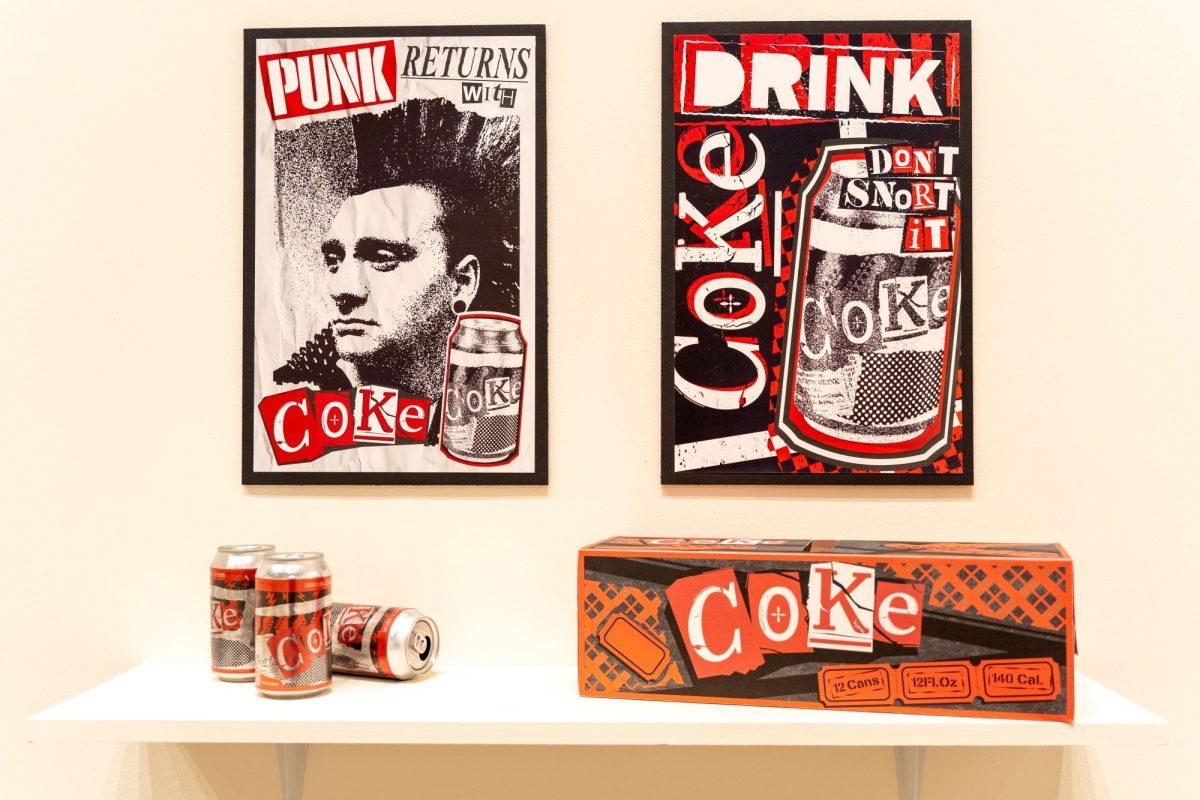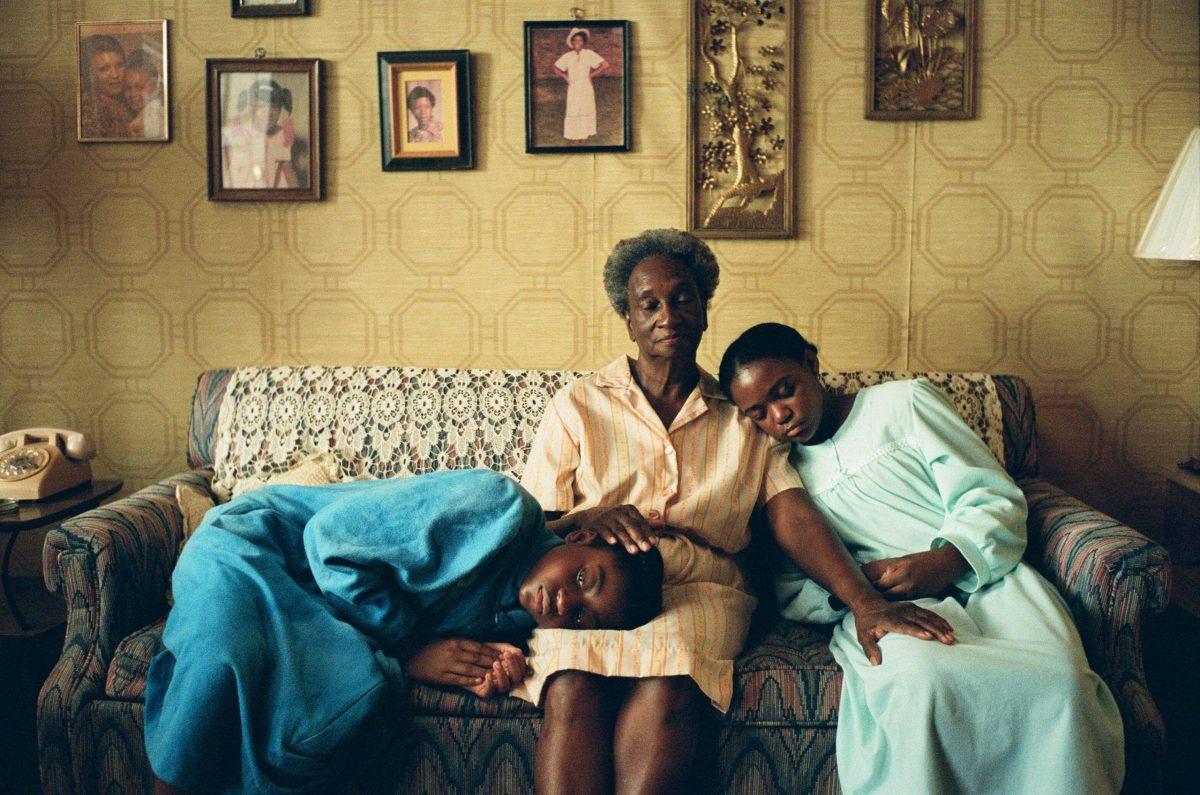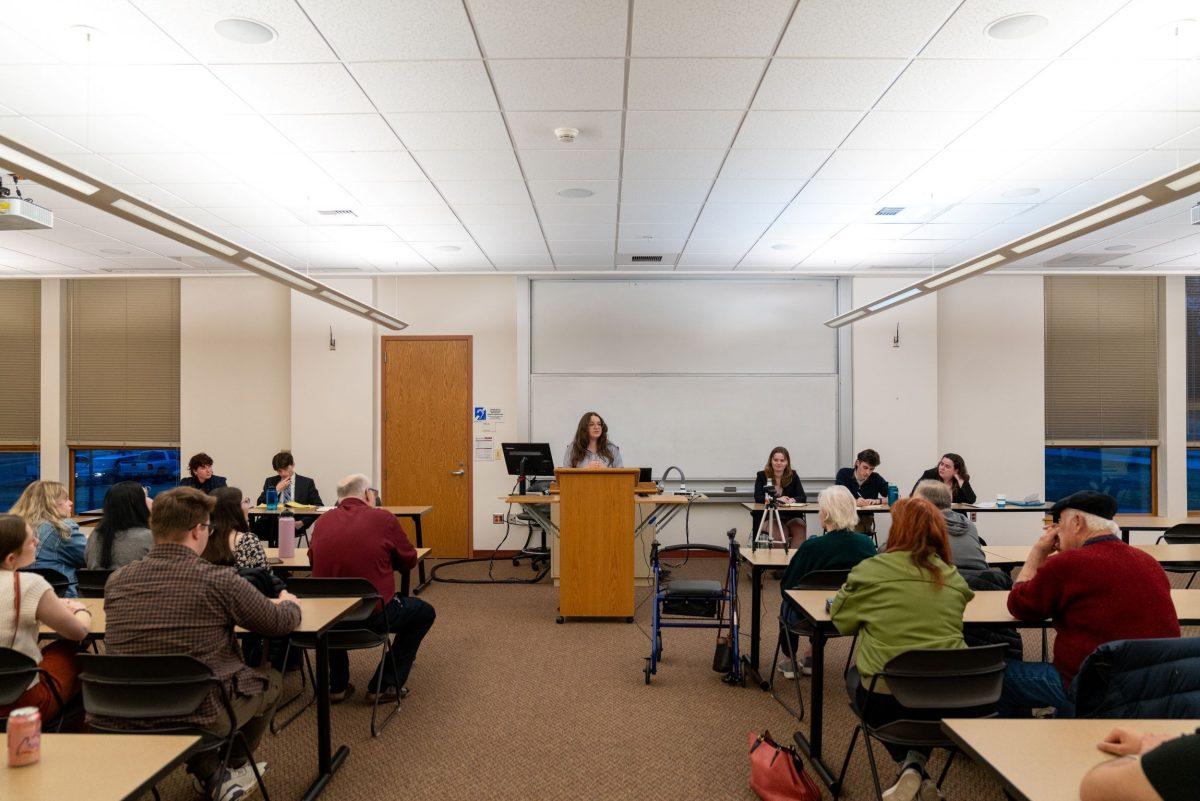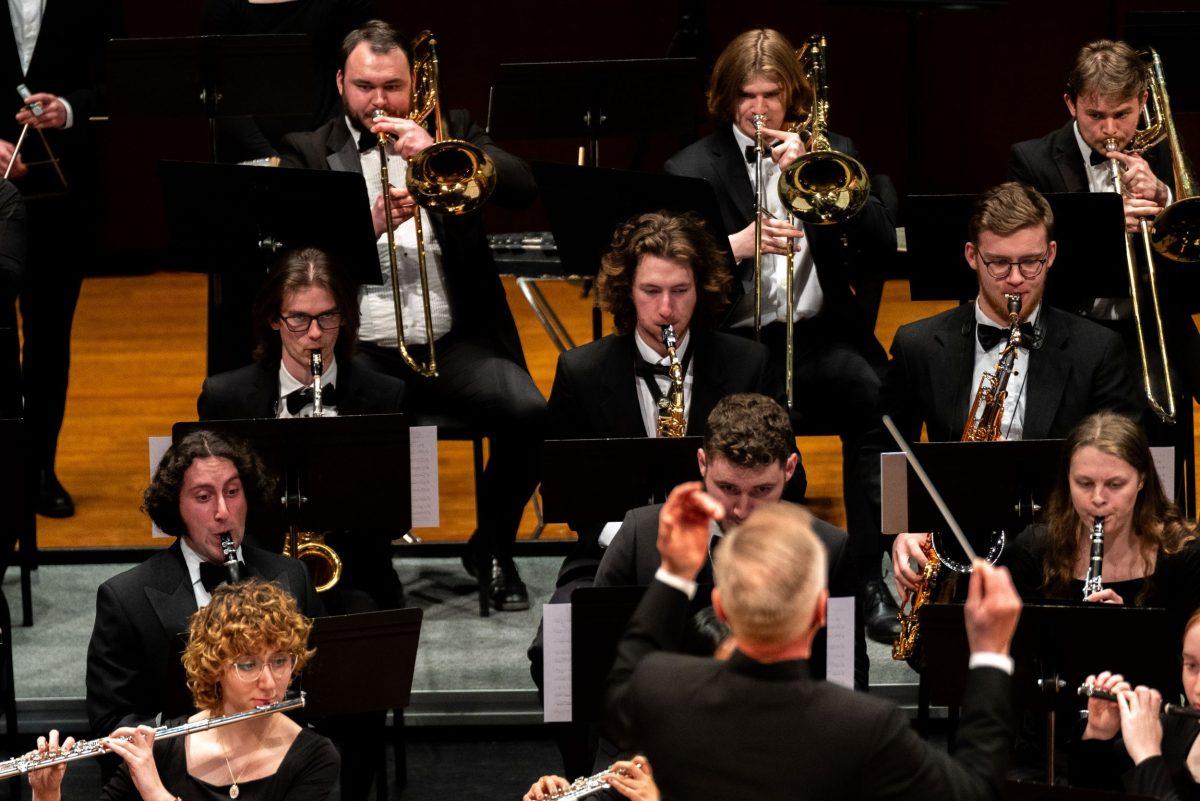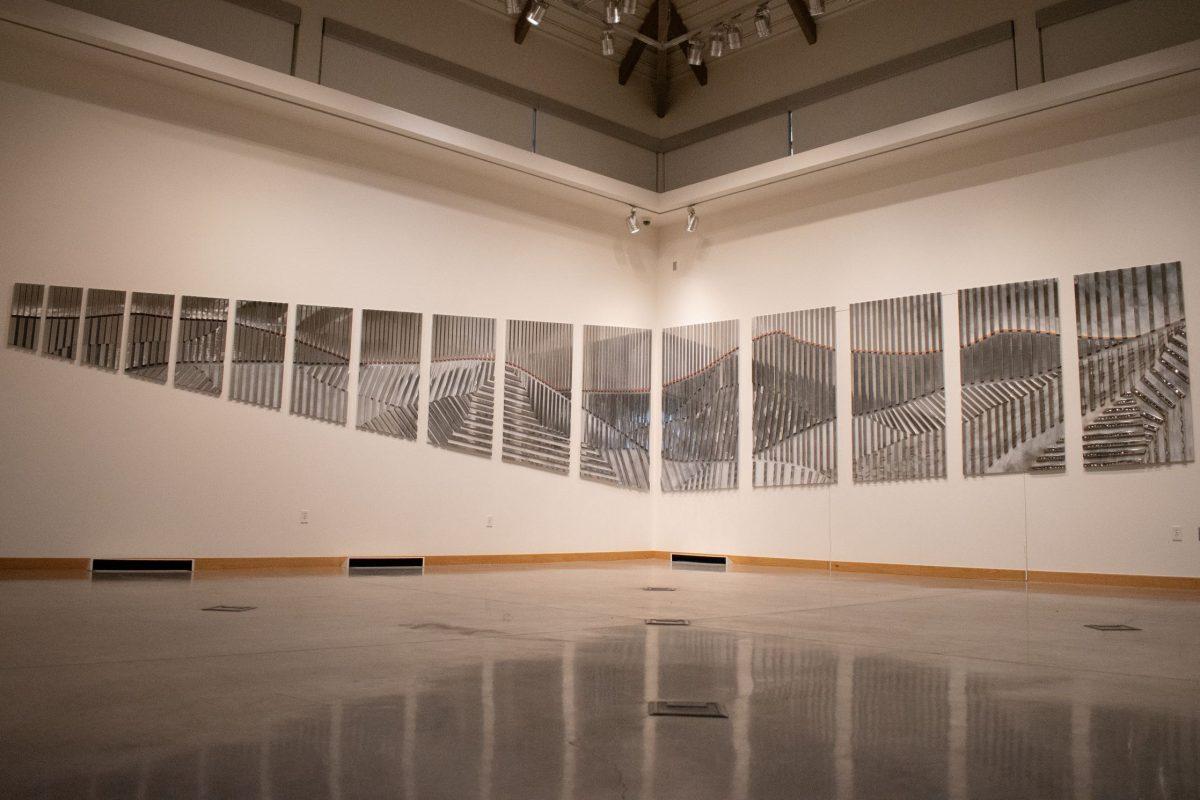by Jo Miller
Arts & Culture Editor
 Don, a 19-year-old college student, swaps his conservative church life in Texas for life at a liberal northwest college in the new movie “Blue Like Jazz.” At Reed College he finds himself in the midst of peculiarities he never found in his Baptist church: a man in a pope outfit burning books, a half-naked marching band and a robot invasion. The movie dives into an exploration of faith, struggle and belonging in a world cold to Christian belief.
Don, a 19-year-old college student, swaps his conservative church life in Texas for life at a liberal northwest college in the new movie “Blue Like Jazz.” At Reed College he finds himself in the midst of peculiarities he never found in his Baptist church: a man in a pope outfit burning books, a half-naked marching band and a robot invasion. The movie dives into an exploration of faith, struggle and belonging in a world cold to Christian belief.
“Blue Like Jazz” is based on Donald Miller’s popular book of the same name, a collection of memoir essays subtitled “Nonreligious Thoughts on Christian Spirituality.”
The great rescue
The movie got off to a rocky start with the project almost coming to a stop in 2010. Miller co-wrote the film’s screenplay with the director, Steve Taylor, and Ben Pearson in 2006, but when funding fell through, Miller announced on his blog that the project was over. But fans wouldn’t have it. The filmmakers started getting offers for donations and were even approached by two men from Tennessee who started a Save Blue Like Jazz campaign through Kickstarter.com, a funding platform for creative projects.
“Their enthusiasm was infectious, but I frankly thought that they were a little naïve,” Taylor said. “I just didn’t see how we would raise the kind of money we needed.”
Taylor was proven wrong when the campaign yielded more than enough from more than 4,500 people who wanted to see the movie made.
The film is now being released on the big screen nationwide on April 13. Because the campaign was such a gift the filmmakers decided they wanted to give back in return, Taylor said. Ten percent of profits made in theaters will go to three non-profit organizations chosen by the movie’s supporters: The Mentoring Project, International Justice Mission and Blood:Water Mission.
Marshall Allman, the lead actor who plays Don, said the atmosphere on set was affected by the film’s rescue story because everyone working on it knew this film was something special.
“There was this kind of urgency or sort of an onus to do them proud and to make the people that love the book so much really feel like we really put our most into making an excellent movie,” Allman said.
From memoir to movie
So how does one turn a book of autobiographical essays into a movie?
“If you’ve read the book you know you don’t necessarily put the book down at the end and say, ‘Oh, I see this movie in my head,’” Taylor said. “It’s like a collection of essays; it’s fairly stream of consciousness.”
Whitworth junior Katherine Bryant said she is obsessed with everything Donald Miller writes and she didn’t think “Blue Like Jazz” would ever be a movie.
“I’m having a hard time envisioning what it’ll be like,” Bryant said.
Taylor said when he first read the book he spotted an interesting narrative thread that he was surprised hadn’t been made into a movie sooner. It’s an example of what he said is a fairly common experience: A kid grows up in a conservative southern Baptist home in suburban Houston and ends up in Portland, Ore., attending classes at Reed College. Taylor said it’s hard to imagine two more opposite environments in the United States.
“They either reject the faith that they were raised with or they have to make it their own, and I thought that would make for a really compelling story,” Taylor said.
In the process of editing Miller’s life story, Taylor said they had to make decisions based on what would make for a more interesting movie. Taylor said Miller joked, “You know next time I should just live a more interesting story and we wouldn’t have to change so many things.”
“A Million Miles in a Thousand Years” is Miller’s latest book, which is primarily about the process of turning his real story into a movie story.
The biggest change from “Blue Like Jazz” the book to the movie is that Miller was in his early 30s when he audited classes at Reed and lived in a house off-campus. In the movie his character is a 19-year-old who transferred to Reed and lives in the dorms.
Readers of the book may also notice some other differences in the movie. Miller’s friend Laura was changed to Lauryn (played by Tania Raymonde) and made a lesbian. The change was made in order to avoid an assumption of a potential love triangle between Miller’s character and Lauryn and Penny (played by Claire Holt), two good friends he makes at Reed. That would not have been good for the story, Taylor said.
Miller’s mother in the movie is also nothing like his real mother. And his father appears as a character in the movie, but Miller’s real father abandoned him when he was a boy.
The first thing Allman said he noticed about his part playing Miller in the movie was that his character was not an exact replica of Miller; it was more of an interpretation. But Allman did notice a characteristic of Miller that he tried to embody in the film.
“One of the things that I found in all of Don’s writing was that he has this real passion to seek out adventure and a zest for telling a great story with his life,” Allman said. “I’m that way, too. And so that was one of the things that I was really excited to bring to the screen as an undertone throughout the movie.”
Allman, who plays characters in various TV shows such as “True Blood” and “Prison Break,” said he is always looking for a variety of roles and playing Miller was just that.
“As an actor I want new things to challenge me, take me to different places, so whether it’s playing a shape shifter who has sociopathic tendencies on ‘True Blood’ or whether it’s playing a pious Christian guy who gets his mind blown wide open by the eccentricities of Reed College, I love it.”
Not a ‘Christian’ film
“Blue Like Jazz” is not exactly what one would consider a family film. Foul language and sex references (what anyone would find on most college campuses) give the film its PG-13 rating. That is not a problem, though, because while the movie is about faith, it is not a Christian film.
Taylor said from the very beginning the filmmakers didn’t want “Blue Like Jazz” to fit in with what has now become a Christian movie genre; they wanted to separate the comparison at every turn.
“It’s about spirituality so we’re certainly dealing thematically with issues of faith and values,” Taylor said.
Bryant said Miller’s book is a different picture of how to do Christianity. It’s not exactly about what to do, but the way in which one interacts with people.
“It’s an interesting way to look at the Church and the [church] body in a way that’s illustrative,” Bryant said.
For Allman, the film deals with the fear people have of getting judged or discriminated against for something they believe or the way they act.
He said the concept is brilliantly portrayed in the film when shortly after meeting Don, Lauryn says to him, “If you plan on ever making friends or sharing a bowl or seeing a human vagina without a credit card, get in the closet, Baptist boy, and stay there.”
Allman, who is a Christian, said he loves this scene because it shows a sort of reverse discrimination because some non-Christians preach that tolerance should be given to everyone but to Christians. He admits some Christians have done some out-of-line things in the past and understands why some people are angry with people associated with Christianity.
“It’s nice to let people know, ‘Hey, we’re aware of it,’” Allman said. “We’re not just trapped in a bubble thinking we’re the bee’s knees.”
Allman said his hope is that the film creates a new context for a fresh conversation about an old subject.
“There’s a lot of hate going around and name-calling and lack of understanding — ignorance really — that’s being bred on both sides, people with faith and people without faith,” Allman said. “And I hope this kind of creates a new window for a conversation to be had fresh and that there’s new understanding.”
“Blue Like Jazz” opens nationwide on April 13, but because it is an independent film it is not opening everywhere. A list of theaters playing the film can be found on the movie’s website. For students, the closest locations are in the Seattle area. But according to the movie’s website the list of theaters is still growing and if one wants the movie to come to their city they can contact their local theater and request “Blue Like Jazz” to be booked for showings.
Contact Jo Miller at [email protected].

